 [Curator, educator, and historian Peter C. Bunnell (October 25, 1937-September 20, 2021) died at his home in Princeton on Sept. 20 after a lengthy illness. He was 83.
[Curator, educator, and historian Peter C. Bunnell (October 25, 1937-September 20, 2021) died at his home in Princeton on Sept. 20 after a lengthy illness. He was 83.
When I initiated my column at the Village Voice in spring of 1968, Peter had just moved upward from a temporary assignment cataloguing the collection of the Museum of Modern Art’s Department of Photography to a full-time position as Associate Curator there. He had originally planned to become a photographer, getting his undergraduate degree from the Rochester Institute of Technology, where he studied with Minor White, and his M.F.A. from Ohio University, where he studied with Clarence H. White Jr., son of the noted pictorialist. (He would curate a Clarence White retrospective for MoMA.) He also received a master’s in art history from Yale University in 1965.
Consequently, between 1968 and 1972, when he left the MoMA department to become the inaugural David Hunter McAlpin Professor of the History of Photography and Modern Art at Princeton University — the first endowed faculty position in the field in the U.S. — I reviewed most of the exhibitions he curated for MoMA, for either the Voice or the New York Times. These ranged from solo shows by Jerry Uelsmann and Barbara Morgan to the larger and more controversial “Photography into Sculpture.” (Click here for my review of that show.) The last project of his that I reviewed was “Minor White: The Eye that Shapes,” a touring retrospective; I wrote about the presentation of that show at (fittingly) the Museum of Modern Art, for the New York Observer. (For MoMA material about that retrospective, click here.)
This profile/interview first appeared in the New York Times on June 6, 1971, under the title given below and accompanied by a portrait of its subject. It’s unusually long; as a rule, the Times restricted me to 1500 words maximum, 1200 words if the column included a picture.
For the Bunnell obituary published by Princeton University, click here. For a tribute to him by Sarah Meister, newly installed as the director of the Aperture Foundation and formerly curator of the MoMA Department of Photography, click here. — A.D.C.]
•
Money, Space and Time, or the Curator as Juggler
During the informal discussion which closed the symposium on photographic criticism held at George Eastman House last February, Peter Bunnell, Curator of the Museum of Modern Art’s Department of Photography, suggested that among the areas of inquiry not covered by this gathering was the role of the curator as critic.
Unfortunately, there was insufficient time to permit elaboration of this concept, but the idea was obviously significant enough to warrant pursuit. So, in a recent series of interviews on Bunnell’s home ground at the Museum, I questioned him about the critical function of curatorship and its specific applications to his own work. Bunnell and John Szarkowski — Director of the Department of Photography, and the man who invited Bunnell to join the department’s staff in 1966 — are co-pilot and captain, respectively, of the largest photographic archive/showplace in New York City, which in turn is the undisputed center of photographic activity in the country. Together, their influence on the world of creative photography is unparalleled; the power they wield jointly, and the ways in which they wield it, have inevitably created factions within the photographic community. Both Bunnell and Szarkowski have their admirers and detractors — though Bunnell, because he has chosen to sponsor directly a body of radical, experimental, mixed media work, has perhaps more than his share of the latter.
Certainly much of the criticism leveled at these two men (a goodly portion of which has come from these quarters) is merited, in that the rightness of their decisions and the wisdom of their judgements are often open to question. But — disregarding that hostility which springs more from personal antipathy than any other impulse — the majority of adverse comments on the department’s policies are not so much undeserved as inevitable; the two men who guide it are holding down jobs which — like the mayoralty of New York City and the presidency of the nation — are almost untenable, for it is truly impossible to satisfy all, or even most, of the numerous segments which make up its public.
Bunnell is well aware of this, though his response toward such an insurmountable problem is not resigning himself to brooding fitfully. Instead, he is determined not to let it sap his energies (which appear less exhaustible than his time). And he sees it as directly linked to his own critical role as a curator. “The main vehicle for bringing work from the artist to the ‘public’ critic, and thus to the public at large, is the museum,” he explains. “By the process of selection with which he deals, then, the museum curator is automatically a critic.”
I asked if, that being true, there was what might be called a MoMA aesthetic. “If there is,” Bunnell replied; “I think it’s a broad one, broad enough to allow us to work, as we did, on the Walker Evans retrospective, ‘Photo Eye of the ’20s,’ and ‘Photography into Sculpture’ simultaneously. There’s no question that we are here developing a critical stance and position, though I wouldn’t care to define it at this point, for I believe it’s very much in flux. This department has been molded by three quite different sets of values: those of 1937-46 [Beaumont Newhall’s tenure], 1946-62 [Edward Steichen’s], and, under John Szarkowski, from 1962 until now, with myself thrown in as an added factor since ’66. Lately we’ve realized that we’d accepted a bias — which led from Atget through Stieglitz to Weston — and we’re in the process of rethinking that and straightening it out.
“Some of the problems involved in running this department are just too complex for solution,” he continued. “For example there are always very difficult decisions to make as to what you acquire for the permanent collection, what you show without purchasing, and so forth. Normally you can set a balance of sorts, but right now we’re in a financial bind — this is true of the whole museum. We may have to cut our exhibit schedule heavily, which will mean that each show we choose to mount will carry an even more exaggerated weight in critical terms. We may have to cut down on purchasing — and even if a curator doesn’t wish to function as a critic insofar as showing or writing about a specific artist goes, he’s morally obliged to preserve the work of those who have been judged significant by other critics. There’s a thin line you walk in figuring out what to acquire, and that’s based on your critical faculties. Shortage of funds will make the line that much thinner.”
Though the museum is best known, in photographic terms, for its collection of 20th-century artists, there are problems even there, according to Bunnell. “At the moment, we’re deeply involved in cataloguing our entire holdings — first, to find out what we have, since there’s much confusion in that area, and, second, to produce a catalogue for publication and distribution. As it happens, that’s the task I was initially called in to perform, but there’s just so much to do that my energies have been diverted elsewhere.
“Even at this stage, though, it’s obvious to us that while we have a substantial collection for this century, we’re deficient in work from the turn of the century through the 1920’s, major figures like [Alvin Langdon] Coburn as well as minor ones. We have to fill in just below the landmark level; that came out in preparing the ‘Photo Eye’ show. As for the nineteenth century, that’s a thorny issue; there we have to balance our educational function and our curatorial emphasis, but under no circumstances can we hope to be anything more than representative in that area. On the whole, though, I feel we have a remarkable collection, given our dilemmas. … ”
These dilemmas boil down to conflicts between three basic factors, which crop up over and over in Bunnell’s conversation. “We have just so much space, so much money, and so much time. It becomes a juggling act. We’re working on the cataloguing; we’re working on exhibits [two will open in July; one a traveling one-man show by Manuel Alvarez Bravo, the other an original exhibit of the work of Clarence H. White, which, with an accompanying monograph, is being prepared by Bunnell]; we travel and lecture and confer. We’ve got boxes in storage vaults and stacked around here which haven’t been opened in 10 years — we don’t even known what’s in them, and we need to find out.
“Acquisitions, publications, and exhibits take a lot of money, in addition to which the maintenance of the collection, simply to preserve it from the physical handling it gets in the Study Center, costs a lot. We can’t figure out a plan to handle all this which makes us happy, let alone anyone else. But we must choose, we must make decisions which are in effect critical decisions based on these factors. We can either accept responsibility for that, or else do it haphazardly, but we can’t get out of doing it.” He uttered his sharp, barking laugh. “You have to be willing to live with your own fallibility to take on a job like this.”
There are two accusations commonly leveled at the department (and, indeed, at museums generally). The first is that, by giving attention to a new trend — such as sculptural photography — the department may be tacitly directing artists to explore a certain area. Bunnell acknowledged this possibility, but insisted that “What you do you believe in, and you demand quality. I have a very distinct sense of the dangers involved — people think of us as czars — but I’m truly not interested in just throwing out red herrings. I am interested in enriching the quality of life. The pursuit of a direction, ideally, will serve to further that purpose. ‘Photography into Sculpture’ challenged my own esthetic judgments as well. … Especially in this museum, exhibits originate with the curatorial staff; they are — as embodiments of critical attitudes — indicative of the personalities involved.”
 The other accusation often heard is one of cliqueishness, and Bunnell candidly admitted that “there are elements of truth there. There are people you come to know well over the years, and whose work you respect, so you’re prone to say, when someone calls up to inquire about work in a certain area, ‘Oh, yes, you should get in touch with X or Y.’ There’s a tremendous danger in that, so we try to be intensely aware of it and guard against it.
The other accusation often heard is one of cliqueishness, and Bunnell candidly admitted that “there are elements of truth there. There are people you come to know well over the years, and whose work you respect, so you’re prone to say, when someone calls up to inquire about work in a certain area, ‘Oh, yes, you should get in touch with X or Y.’ There’s a tremendous danger in that, so we try to be intensely aware of it and guard against it.
“At the same time,” he went on, “much of the mistrust is really unfounded. I know that one of the cliques which is supposedly operative here is said to involve Lee Friedlander and Diane Arbus. But they’ve only been shown here once. If that’s a clique, it sure doesn’t throw much weight around. Nevertheless, familiarity is a risk, which is why I take traveling so seriously. It keeps me from becoming insulated, a tendency which comes with the job. I never go out of town to speak but what my real motive is to use their money to get there and see what the students are up to. I make it a policy never to stay at the home of a faculty member; I check into a hotel, make contact with the photography students, and tell them to come over after dinner. There’ll be a couple of bottles of Scotch, and we can find out what’s going on.”
Of his own involvement in the medium, Bunnell recalls, “I was snookered into photography to begin with — captured by certain aspects of the medium — and it’s simply been a matter of deciding what I could do within that context. The whole reason I’m in this curatorship is Beaumont.” He was referring, of course, to Beaumont Newhall, who transmitted the historian/curator bug to Bunnell when the latter was an undergraduate at Rochester Institute of Technology, during a period which he refers to, with an old grad’s nostalgia, as “the Golden Era.” Minor White and Ralph Hattersley were on the faculty, and the student body included Jerry Uelsmann, Pete Turner, Carl Chiarenza, and Bruce Davidson. Bunnell worked for 12 summers under Newhall at Eastman House, meantime completing an M.F.A. at Ohio University, and an M.A. at Yale (where he is now a Ph.D. candidate; his thesis, a study of Stieglitz’s work between 1887 and 1917, is being held in abeyance — another bit of juggling).
Originally, Bunnell intended to be a photographer himself, but got caught up in the critical side of the medium, though he’s been in numerous group shows and had three one-man exhibits of his own work. He now says that “I have a lot of fun with my own photography, but I wouldn’t participate professionally. Not only are there too many extraneous complicating factors, but I find my other work much more intellectually challenging. I’m not a particularly intuitive individual, and I can’t deal with people who don’t want to be movers and shakers in some way. So I’m inordinately happy here. I love the values dealt with by people working in photography — it has a much richer diversity of expressive materials than any other medium today.”
Peter Bunnell is a difficult man to describe or define. I find it impossible to take at face value the pro and con arguments about his sapience, integrity, taste and motivation; too many emotions tinge the multiple images of him held by the photographic community. Some of the paradoxes have been suggested by Jerry Uelsmann in two portraits of Bunnell: one has him standing in a small, outhouse-like structure beneath a statue of Romulus and Remus suckling; the other depicts him prone on a beach, with a gigantic Prexy’s burger — “the hamburger with a college education” — floating overhead.
Two moments come to mind, however, each time I meet or think of him. I see him at a housewarming party for his new apartment, spiffily casual in a dashiki, next to a refreshment table which held both alcoholic potables and a gallon of organic apple juice; and I remember watching him hobble around on the ground floor of the museum two days before the opening of “Photography into Sculpture,” leaning on a cane and ignoring the cast on his broken foot, opening packages full of strange objects with a combination of curatorial care and childlike glee. Suspect him I must, just as I would expect the public to suspect him, and myself, and anyone else functioning in a critical capacity in this elusive medium. But I also recognize that the task he performs, for better or for worse, is one which not even his most savage detractors envy him.
•
This post supported by a donation from Charles Mintz.
•
 Special offer: If you want me to either continue pursuing a particular subject or give you a break and (for one post) write on a topic — my choice — other than the current main story, make a donation of $50 via the PayPal widget below, indicating your preference in a note accompanying your donation. I’ll credit you as that new post’s sponsor, and link to a website of your choosing.
Special offer: If you want me to either continue pursuing a particular subject or give you a break and (for one post) write on a topic — my choice — other than the current main story, make a donation of $50 via the PayPal widget below, indicating your preference in a note accompanying your donation. I’ll credit you as that new post’s sponsor, and link to a website of your choosing.
And, as a bonus, I’ll send you a signed copy of my new book, poetic license / poetic justice — published under my full name, Allan Douglass Coleman, which I use for my creative writing.

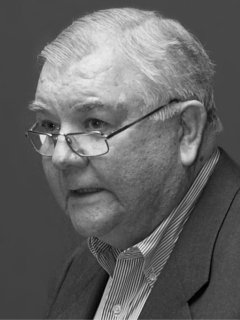
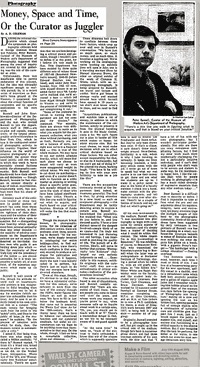
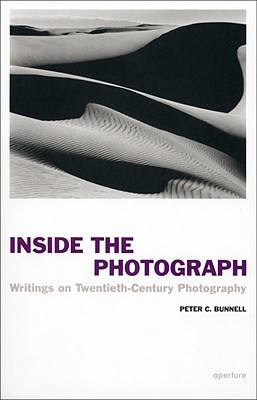
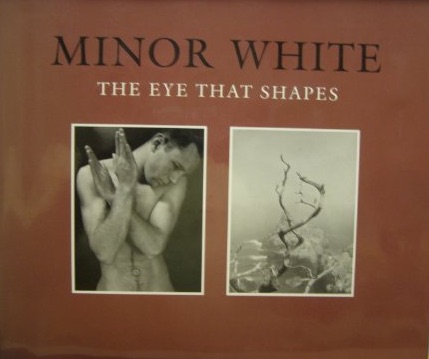
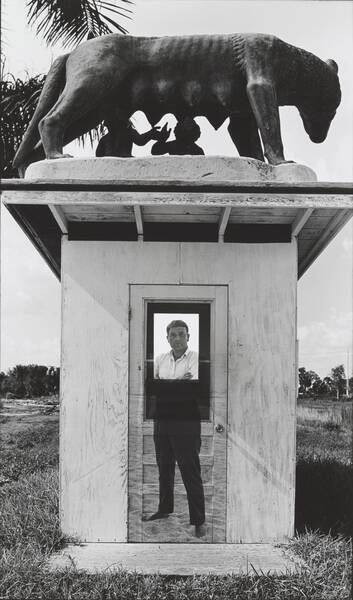
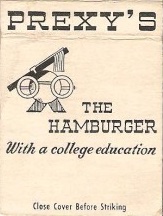




Leave a Comment